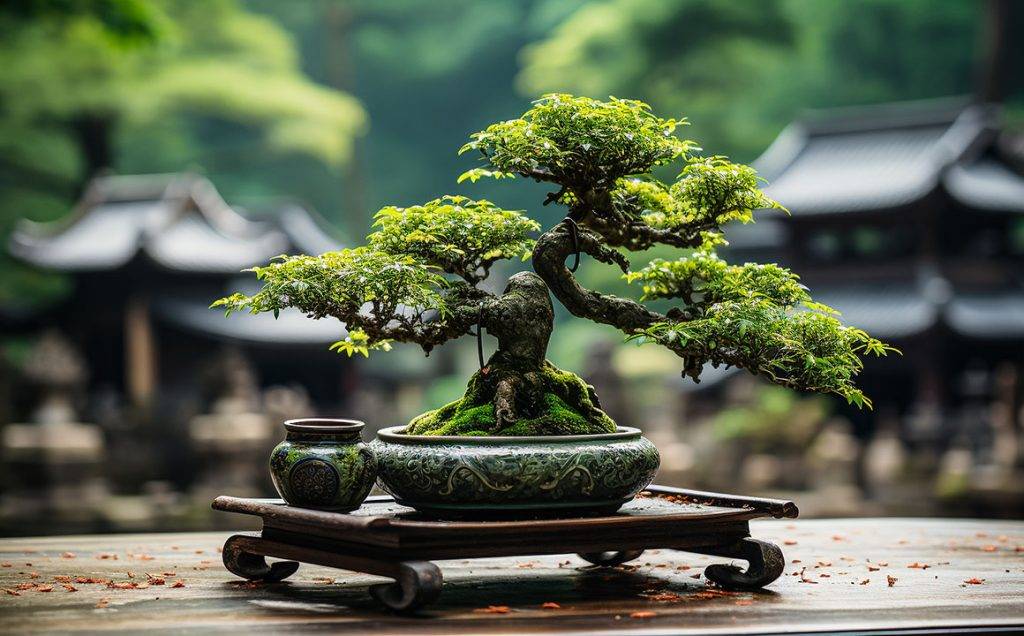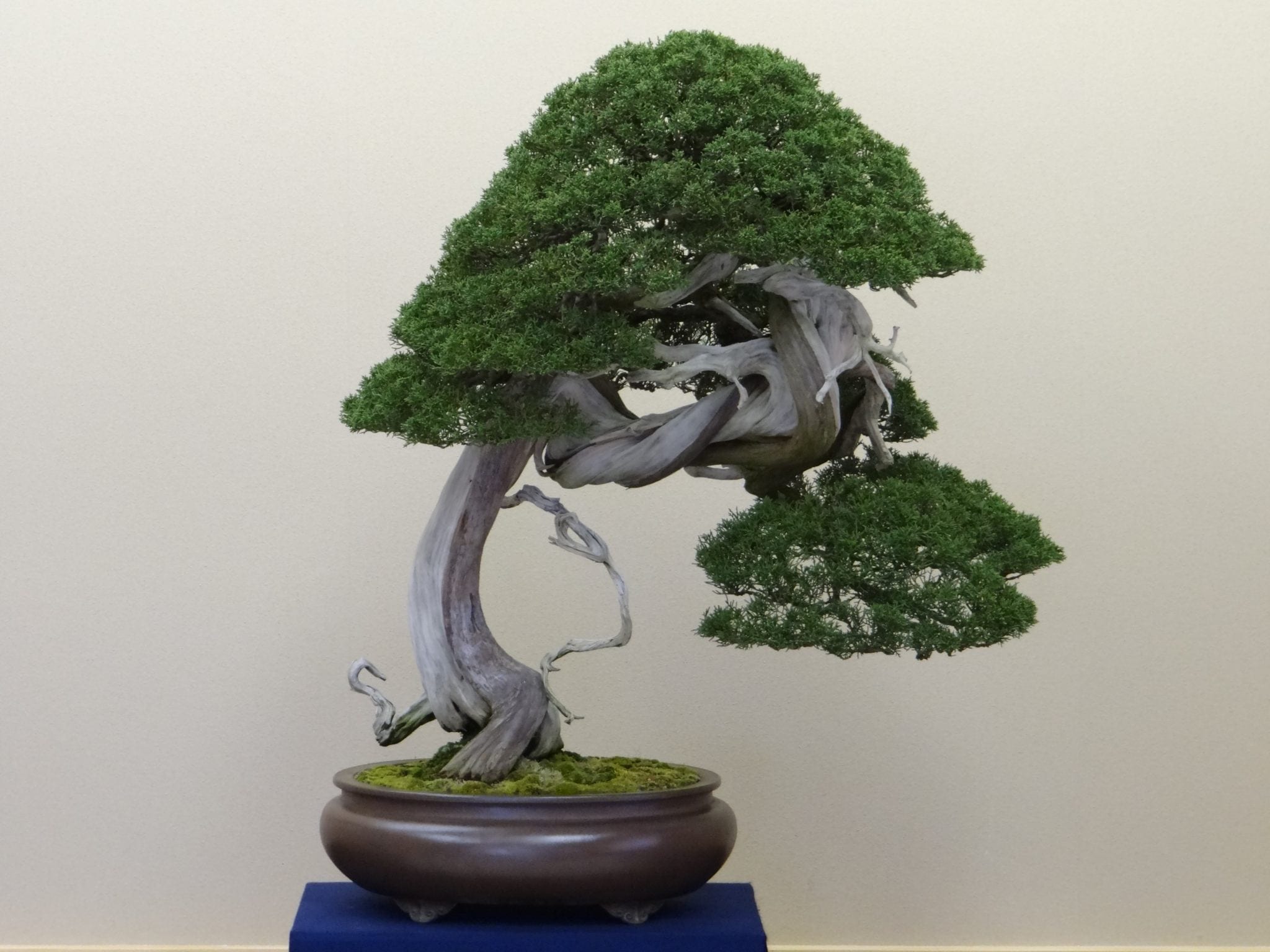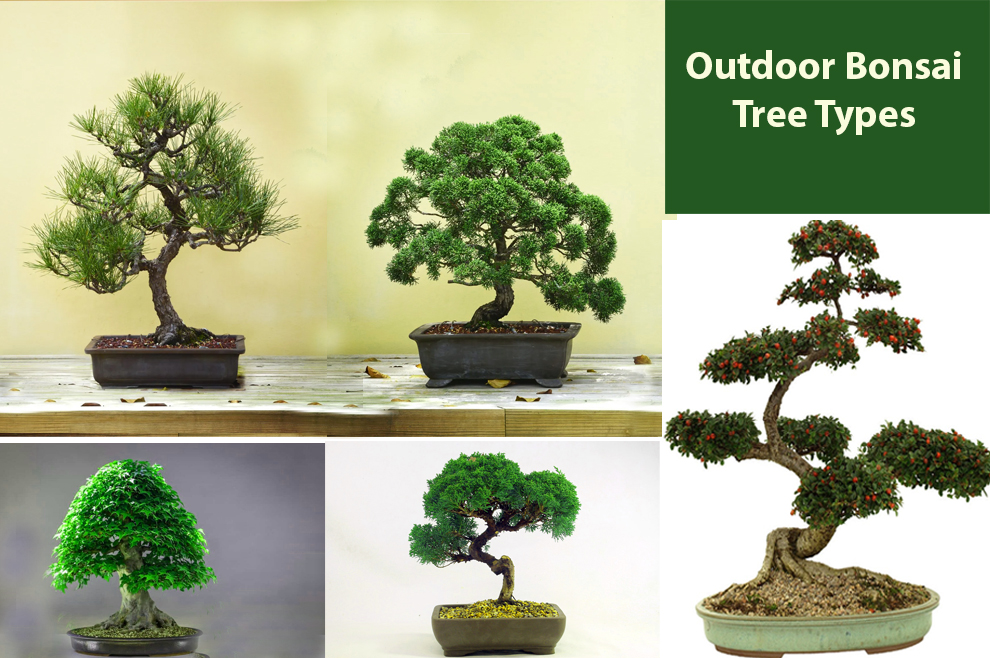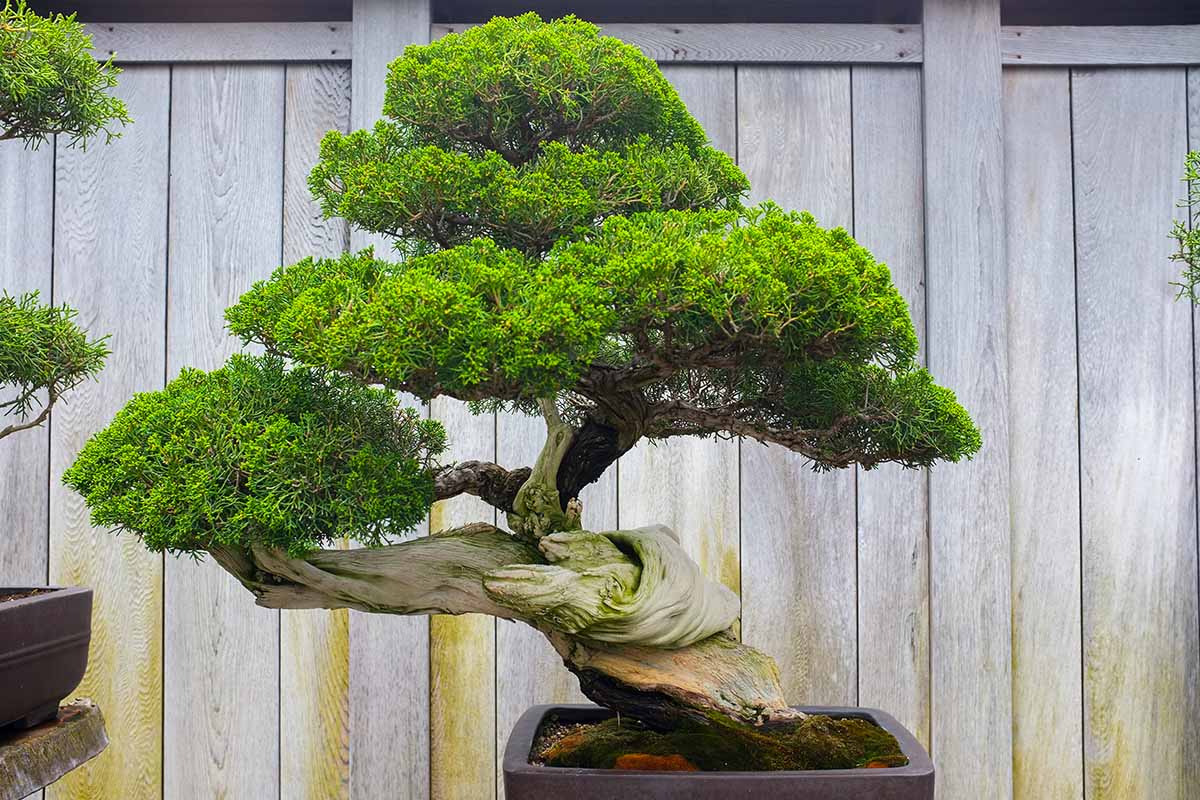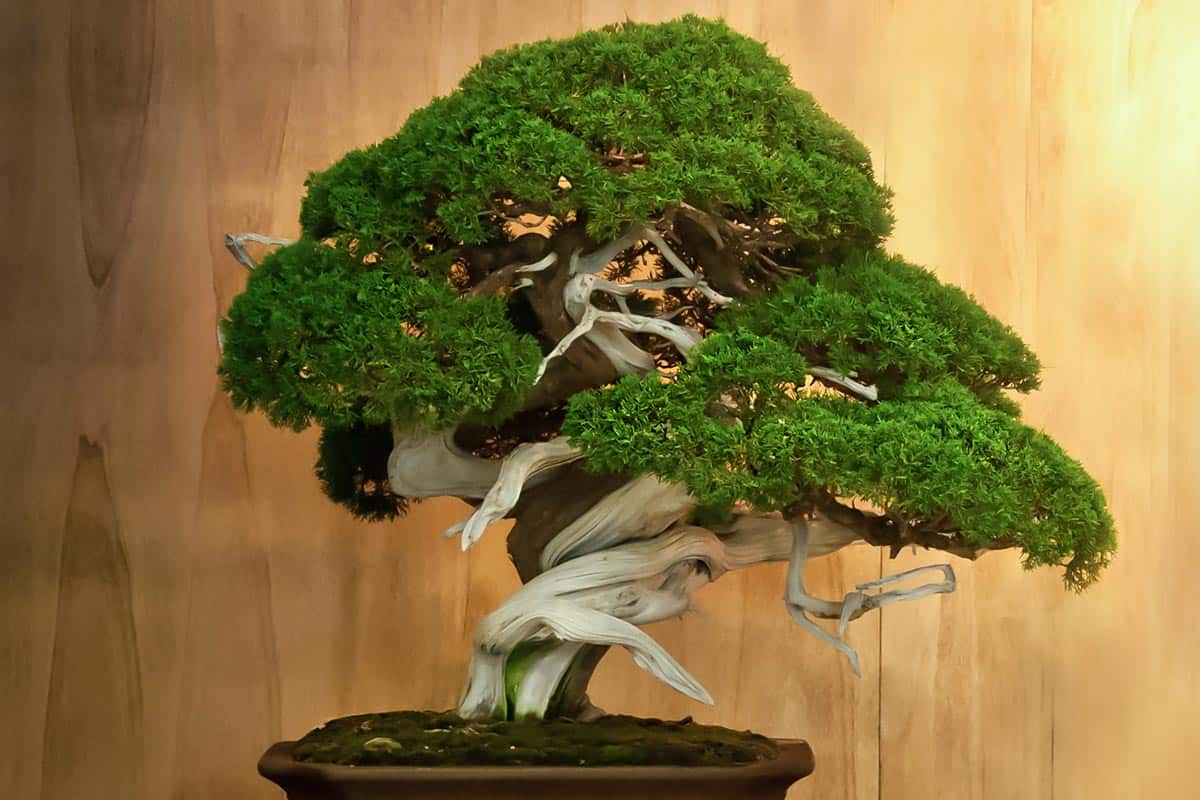What is a Bonsai Tree and How Does it Differ from Regular Trees?
Bonsai trees are miniature trees that are trained and pruned to maintain a small size, typically ranging from a few inches to several feet tall. Unlike regular trees, bonsai trees are carefully cultivated to achieve a desired shape, size, and aesthetic appeal. The art of growing bonsai trees involves a deep understanding of horticulture, patience, and attention to detail.
One of the primary differences between bonsai trees and regular trees is their size. While regular trees can grow to be tens or even hundreds of feet tall, bonsai trees are intentionally kept small through regular pruning and training. This process allows bonsai trees to thrive in small spaces, making them ideal for indoor or outdoor containers.
Another key difference between bonsai trees and regular trees is their growth rate. Regular trees can grow rapidly, sometimes adding several feet to their height in a single year. Bonsai trees, on the other hand, are carefully pruned to control their growth rate, allowing them to maintain a consistent size and shape over time.
When considering how big do bonsai trees get, it’s essential to understand that their size is directly related to the level of care and attention they receive. With proper pruning, watering, and fertilization, bonsai trees can thrive and maintain their desired size for many years.
In addition to their size, bonsai trees also differ from regular trees in terms of their root system. Bonsai trees typically have a shallow root system, which allows them to thrive in small containers. Regular trees, on the other hand, have a deeper root system that allows them to absorb more water and nutrients from the soil.
Overall, bonsai trees are unique and fascinating plants that offer a range of benefits for gardeners and plant enthusiasts. By understanding the differences between bonsai trees and regular trees, you can better appreciate the art and science of growing these miniature masterpieces.
Factors Affecting Bonsai Tree Size: Species, Age, and Care
When considering how big do bonsai trees get, it’s essential to understand the factors that influence their size. Three primary factors affect the size of a bonsai tree: species, age, and care. Each of these factors plays a crucial role in determining the ultimate size of a bonsai tree.
Species is a critical factor in determining the size of a bonsai tree. Different species have varying growth rates and sizes, and some are more suitable for bonsai cultivation than others. For example, the Ficus species is known for its small leaves and compact growth habit, making it an ideal choice for bonsai trees. On the other hand, the Juniper species is known for its larger leaves and more vigorous growth habit, requiring more frequent pruning to maintain a desired size.
Age is another factor that affects the size of a bonsai tree. As a bonsai tree ages, it will naturally grow larger if left unpruned. However, with regular pruning and training, a bonsai tree can be maintained at a desired size for many years. The age of a bonsai tree also affects its root system, with older trees having a more developed root system that can support a larger tree.
Care is also a critical factor in determining the size of a bonsai tree. Proper care, including pruning, watering, and fertilization, can impact the tree’s size and overall health. For example, over-pruning can stunt a tree’s growth, while under-watering can cause a tree to become stressed and more susceptible to disease. Regular fertilization can also promote healthy growth and development, allowing a bonsai tree to reach its full potential.
Understanding the interplay between these factors is essential for growing a healthy and well-proportioned bonsai tree. By selecting the right species, providing proper care, and pruning regularly, bonsai enthusiasts can create stunning miniature masterpieces that thrive for many years.
In addition to these factors, environmental conditions such as temperature, humidity, and light exposure can also impact the size of a bonsai tree. For example, a bonsai tree grown in a warm and humid climate may grow more rapidly than one grown in a cooler and drier climate.
By considering these factors and providing proper care, bonsai enthusiasts can create beautiful and unique trees that bring joy and serenity to any space.
How to Determine the Mature Size of a Bonsai Tree
Determining the mature size of a bonsai tree is crucial for understanding how big do bonsai trees get and for planning their care and maintenance. There are several ways to determine the mature size of a bonsai tree, including researching the species, measuring the tree’s trunk and branches, and considering the tree’s age and care.
Researching the species is an essential step in determining the mature size of a bonsai tree. Different species have varying growth rates and sizes, and some are more suitable for bonsai cultivation than others. For example, the Ficus species is known for its small leaves and compact growth habit, making it an ideal choice for bonsai trees. On the other hand, the Juniper species is known for its larger leaves and more vigorous growth habit, requiring more frequent pruning to maintain a desired size.
Measuring the tree’s trunk and branches is another way to determine its mature size. The trunk diameter and branch length can give an indication of the tree’s overall size and shape. For example, a bonsai tree with a trunk diameter of 1-2 inches (2.5-5 cm) is likely to be a smaller tree, while a tree with a trunk diameter of 4-6 inches (10-15 cm) is likely to be a larger tree.
Considering the tree’s age and care is also important for determining its mature size. A bonsai tree that is well-cared for and regularly pruned will generally be smaller than one that is neglected or not pruned regularly. Additionally, the age of the tree can affect its size, with older trees generally being larger than younger trees.
By considering these factors, bonsai enthusiasts can get an idea of how big do bonsai trees get and plan their care and maintenance accordingly. It’s also important to note that bonsai trees can be trained and pruned to maintain a desired size, so even if a tree has the potential to grow large, it can still be kept small with proper care.
In addition to these methods, there are also some general guidelines for determining the mature size of a bonsai tree. For example, a bonsai tree that is grown in a shallow pot will generally be smaller than one grown in a deeper pot. Similarly, a tree that is grown in a warm and humid climate will generally be larger than one grown in a cooler and drier climate.
By understanding these factors and guidelines, bonsai enthusiasts can better plan their care and maintenance and create stunning miniature masterpieces that thrive for many years.
Popular Bonsai Tree Species and Their Typical Sizes
When it comes to growing bonsai trees, selecting the right species is crucial for achieving the desired size and shape. Different species have varying growth rates and sizes, and some are more suitable for bonsai cultivation than others. Here are some popular bonsai tree species and their typical sizes:
Ficus (Ficus spp.): 1-3 feet (30-90 cm) tall, 1-2 feet (30-60 cm) wide. Ficus trees are popular for bonsai cultivation due to their small leaves and compact growth habit. They are relatively easy to care for and can thrive in a variety of environments.
Juniper (Juniperus spp.): 2-4 feet (60-120 cm) tall, 2-3 feet (60-90 cm) wide. Juniper trees are known for their conical shape and can be trained to maintain a small size with regular pruning. They prefer well-draining soil and full sun to partial shade.
Maple (Acer spp.): 2-4 feet (60-120 cm) tall, 2-3 feet (60-90 cm) wide. Maple trees are popular for bonsai cultivation due to their striking foliage and compact growth habit. They prefer well-draining soil and partial shade to full sun.
Chinese Elm (Ulmus parvifolia): 2-4 feet (60-120 cm) tall, 2-3 feet (60-90 cm) wide. Chinese Elm trees are known for their small leaves and compact growth habit, making them ideal for bonsai cultivation. They prefer well-draining soil and full sun to partial shade.
These are just a few examples of popular bonsai tree species and their typical sizes. By selecting the right species and providing proper care, bonsai enthusiasts can create stunning miniature masterpieces that thrive for many years.
When selecting a bonsai tree species, it’s essential to consider factors such as growth rate, leaf size, and hardiness. Different species have varying requirements, and selecting a species that is well-suited to your environment and care level is crucial for success.
In addition to the species, the size of a bonsai tree can also be influenced by factors such as pot size, pruning, and training. By understanding these factors and selecting the right species, bonsai enthusiasts can create beautiful and unique trees that bring joy and serenity to any space.
The Role of Pruning in Shaping and Sizing Bonsai Trees
Pruning is a crucial aspect of bonsai tree care, and it plays a significant role in shaping and sizing these miniature masterpieces. By pruning a bonsai tree regularly, you can control its size, shape, and overall appearance. In this section, we’ll explore the different pruning techniques used in bonsai tree care and how they impact the tree’s size.
Root pruning is a technique used to control the size of a bonsai tree by reducing the size of its root system. This is typically done by pruning the roots of the tree every 2-3 years, which helps to slow down the tree’s growth rate and maintain its size. Root pruning is especially important for bonsai trees that are grown in shallow pots, as it helps to prevent the roots from becoming pot-bound.
Branch pruning is another technique used to shape and size bonsai trees. This involves pruning the branches of the tree to maintain its shape and promote healthy growth. Branch pruning can be done at any time of the year, but it’s best to prune during the growing season when the tree is actively producing new growth.
Leaf pruning is a technique used to control the size and shape of the leaves on a bonsai tree. This involves pruning the leaves of the tree to maintain their size and promote healthy growth. Leaf pruning is especially important for bonsai trees that have large leaves, as it helps to prevent the leaves from becoming too large and overwhelming the tree.
Pruning is an essential part of bonsai tree care, and it’s crucial to prune your tree regularly to maintain its size and shape. By pruning your bonsai tree regularly, you can control its growth rate, promote healthy growth, and create a stunning miniature masterpiece that brings joy and serenity to any space.
When pruning a bonsai tree, it’s essential to use the right tools and techniques to avoid damaging the tree. A good pair of bonsai pruning shears is essential for pruning the branches and leaves of the tree, while a root hook is necessary for pruning the roots. It’s also important to prune the tree at the right time, as pruning during the wrong time of the year can cause stress to the tree.
In addition to pruning, wiring is another technique used to shape and size bonsai trees. Wiring involves using wire to shape the branches and trunk of the tree, and it’s typically done during the growing season when the tree is actively producing new growth. Wiring is a delicate process that requires patience and skill, but it can be used to create stunning and intricate shapes that add to the beauty of the tree.
How to Create a Miniature Bonsai Tree: Tips and Techniques
Creating a miniature bonsai tree requires patience, dedication, and a thorough understanding of the art of bonsai cultivation. To grow a stunning miniature bonsai tree, it’s essential to select the right species, use proper pruning techniques, and provide optimal care. Here are some valuable tips and techniques to help you get started:
1. Select the Right Species: Not all tree species are suitable for bonsai cultivation. Look for species that are known to thrive in containers and can tolerate regular pruning, such as Ficus, Juniper, and Maple. These species are ideal for creating miniature bonsai trees and can be trained to maintain a small size.
2. Start with a Young Tree: Young trees are more adaptable to bonsai training and can be shaped and pruned more easily. Look for trees that are 1-5 years old, as they will be more receptive to training and pruning.
3. Use Proper Pruning Techniques: Pruning is a critical aspect of bonsai cultivation. Use sharp, clean tools to prune your tree, and make cuts just above a growth node. This will help the tree heal quickly and reduce the risk of disease or pest infestations.
4. Prune Regularly: Regular pruning is essential to maintain the shape and size of your bonsai tree. Prune your tree every 1-2 weeks during the growing season to encourage new growth and maintain the desired shape.
5. Provide Optimal Care: Bonsai trees require regular watering, fertilization, and repotting. Water your tree when the soil feels dry to the touch, and fertilize every 2-4 weeks during the growing season. Repot your tree every 2-5 years to provide fresh soil and a larger pot if necessary.
6. Monitor Temperature and Humidity: Most bonsai trees prefer daytime temperatures between 65-75°F (18-24°C) and nighttime temperatures around 55-65°F (13-18°C). Maintain a humidity level of 40-60% to promote healthy growth and prevent disease.
7. Be Patient: Growing a miniature bonsai tree takes time and patience. Don’t expect your tree to reach its full potential overnight. With regular care and pruning, your tree will thrive and become a stunning miniature masterpiece over time.
By following these tips and techniques, you can create a beautiful miniature bonsai tree that will bring joy and serenity to your life. Remember to research the specific needs of your tree species and adjust your care routine accordingly. With patience and dedication, you can grow a stunning miniature bonsai tree that will thrive for years to come.
Common Mistakes to Avoid When Growing Bonsai Trees
Growing a bonsai tree requires patience, dedication, and attention to detail. However, even with the best intentions, mistakes can happen. Avoiding common mistakes is crucial to ensure the health and well-being of your bonsai tree. Here are some common mistakes to avoid when growing bonsai trees:
1. Over-Pruning: Pruning is an essential part of bonsai tree care, but over-pruning can be detrimental to the tree’s health. Prune only what is necessary to maintain the tree’s shape and size, and avoid pruning during the hottest part of the day.
2. Under-Watering: Bonsai trees need consistent moisture, especially during the growing season. Under-watering can cause the tree to become stressed, leading to disease and pest issues. Check the soil daily, and water only when the soil feels dry to the touch.
3. Neglecting Proper Care: Bonsai trees require regular care, including fertilization, repotting, and pest control. Neglecting these tasks can lead to a decline in the tree’s health and appearance. Create a care schedule to ensure your tree receives the attention it needs.
4. Using the Wrong Soil: Bonsai trees require well-draining soil that is specifically designed for bonsai cultivation. Using regular potting soil can cause waterlogging and root rot. Choose a high-quality bonsai soil that is designed for your tree species.
5. Not Providing Enough Light: Most bonsai trees require bright, indirect light to photosynthesize and grow. Placing your tree in a low-light area can cause it to become leggy and weak. Move your tree to a brighter location, or consider using grow lights to supplement the natural light.
6. Not Monitoring Temperature: Bonsai trees are sensitive to extreme temperatures, which can cause stress and damage. Monitor the temperature in your growing area, and move your tree to a more stable location if necessary.
7. Not Repotting Regularly: Bonsai trees need to be repotted regularly to provide fresh soil and a larger pot if necessary. Neglecting to repot your tree can cause the roots to become pot-bound, leading to a decline in the tree’s health.
8. Not Pruning Roots: Root pruning is an essential part of bonsai tree care, as it helps to control the tree’s size and promote healthy growth. Neglecting to prune the roots can cause the tree to become pot-bound and decline in health.
By avoiding these common mistakes, you can ensure your bonsai tree receives the care it needs to thrive. Remember to research the specific needs of your tree species, and adjust your care routine accordingly. With proper care and attention, your bonsai tree will flourish and become a stunning miniature masterpiece.
Conclusion: Mastering the Art of Growing Miniature Bonsai Trees
Growing miniature bonsai trees is an art that requires patience, dedication, and a deep understanding of the tree’s needs. By understanding the factors that influence bonsai tree size, selecting the right species, and providing optimal care, you can create stunning miniature masterpieces that bring joy and serenity to your life.
Remember, the key to growing a healthy and thriving bonsai tree is to provide the right balance of care and attention. By avoiding common mistakes, such as over-pruning and under-watering, and by providing regular pruning, watering, and fertilization, you can help your tree reach its full potential.
Whether you’re a seasoned bonsai enthusiast or just starting out, the art of growing miniature bonsai trees is a rewarding and challenging hobby that can bring a sense of calm and tranquility to your life. By mastering the techniques and principles outlined in this article, you can create beautiful and unique bonsai trees that will be the envy of friends and family.
So, how big do bonsai trees get? The answer depends on the species, age, and care of the tree. With proper care and attention, bonsai trees can thrive and reach their full potential, whether that’s a few inches or several feet tall. By understanding the factors that influence bonsai tree size and by providing optimal care, you can create stunning miniature masterpieces that will bring joy and beauty to your life for years to come.
In conclusion, growing miniature bonsai trees is an art that requires patience, dedication, and a deep understanding of the tree’s needs. By mastering the techniques and principles outlined in this article, you can create beautiful and unique bonsai trees that will bring joy and serenity to your life. Whether you’re a seasoned bonsai enthusiast or just starting out, the art of growing miniature bonsai trees is a rewarding and challenging hobby that can bring a sense of calm and tranquility to your life.


